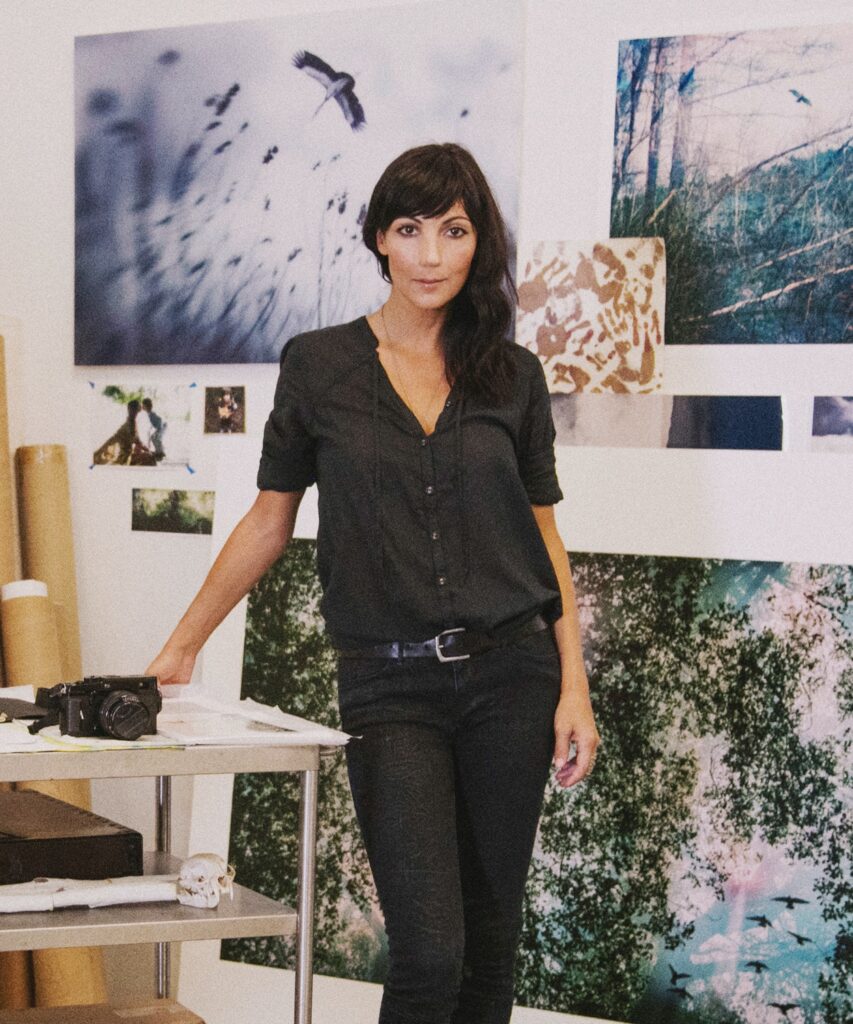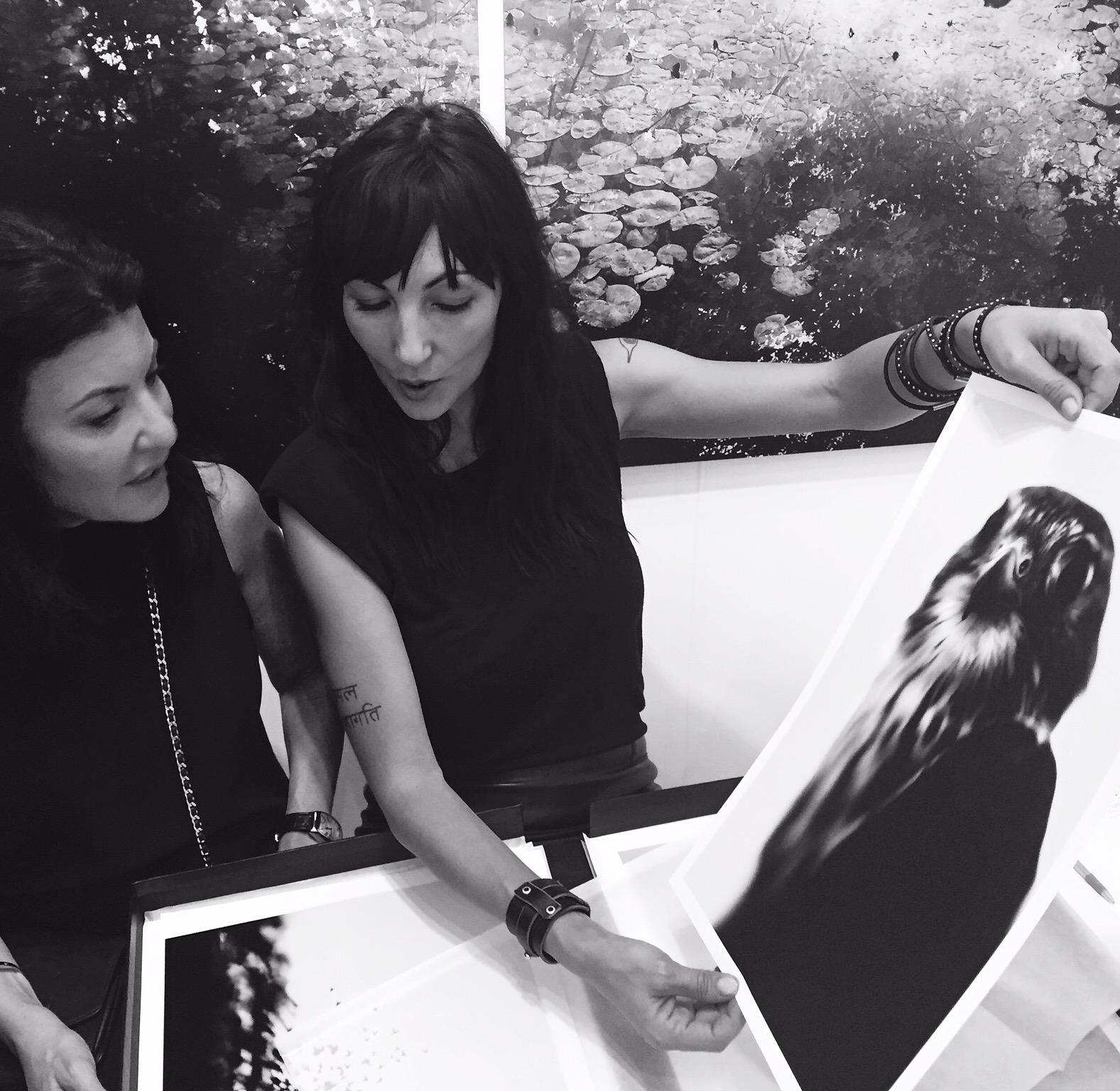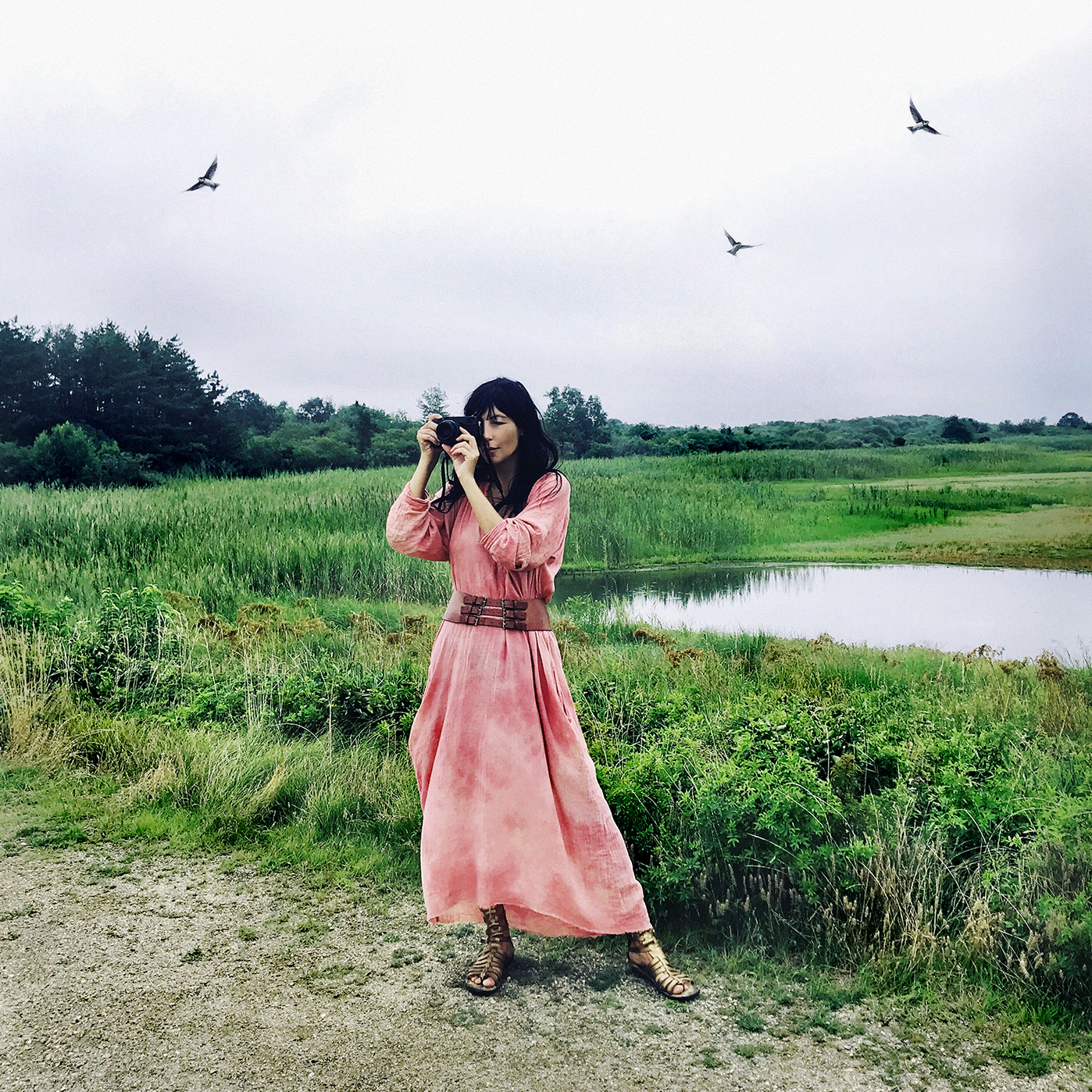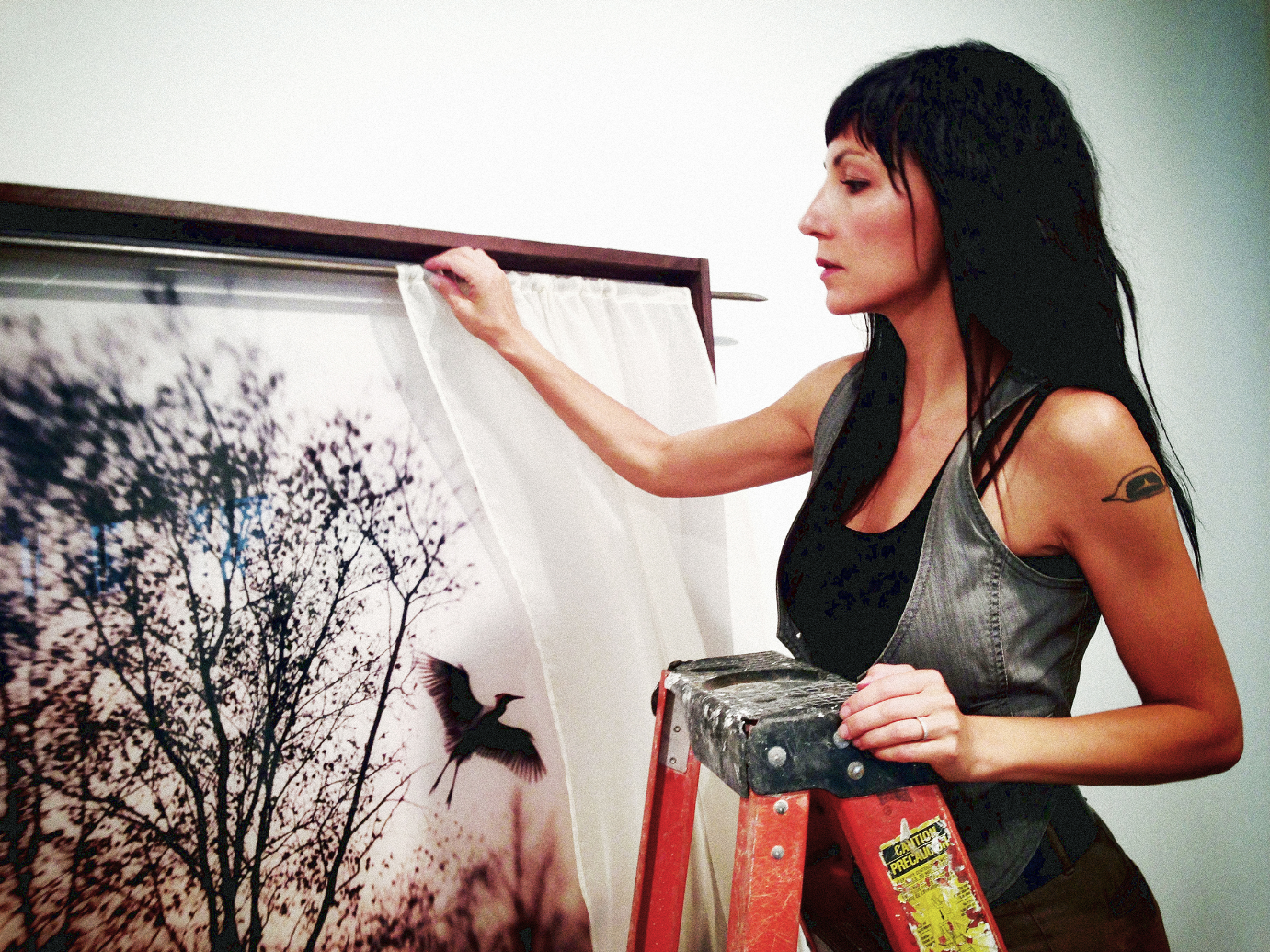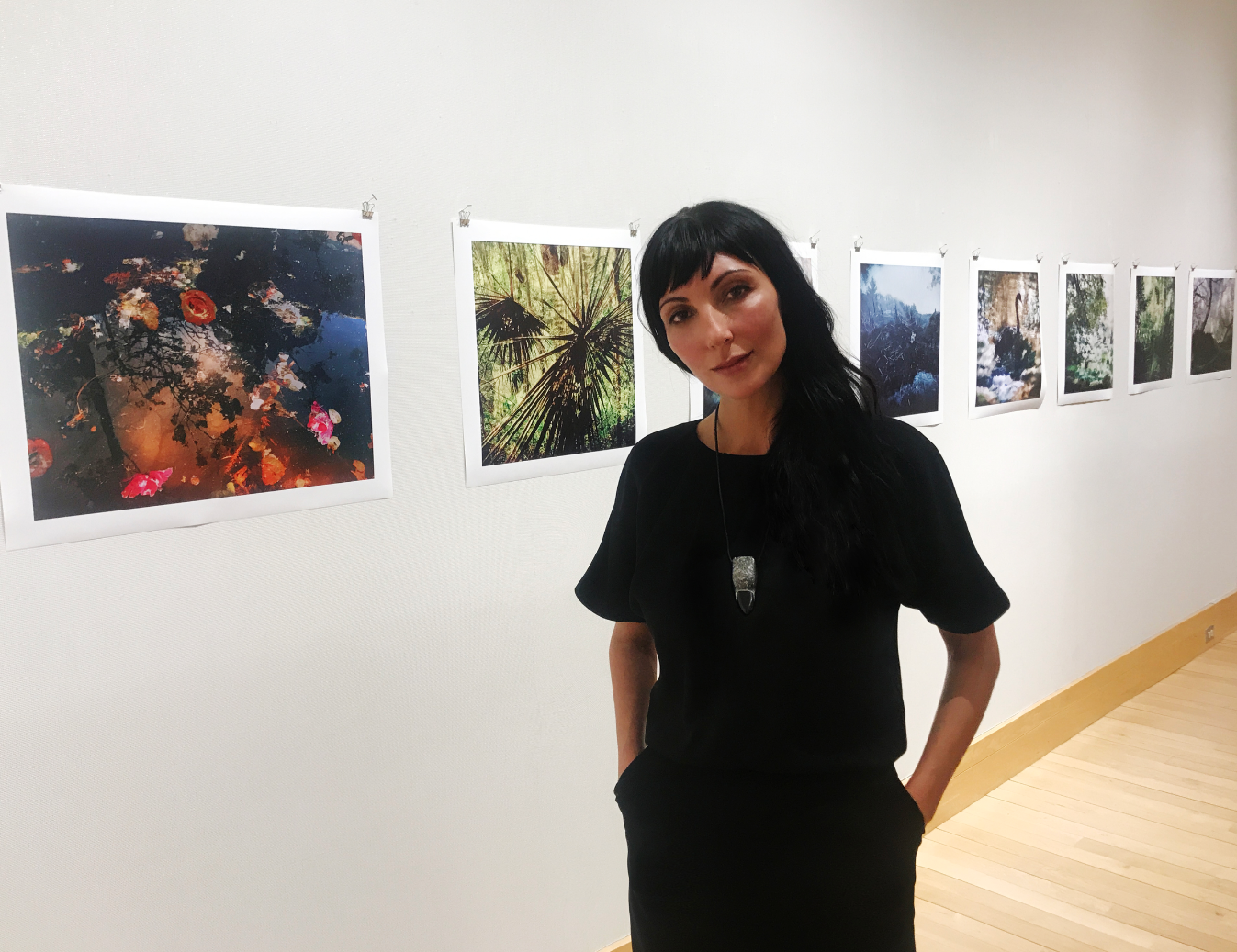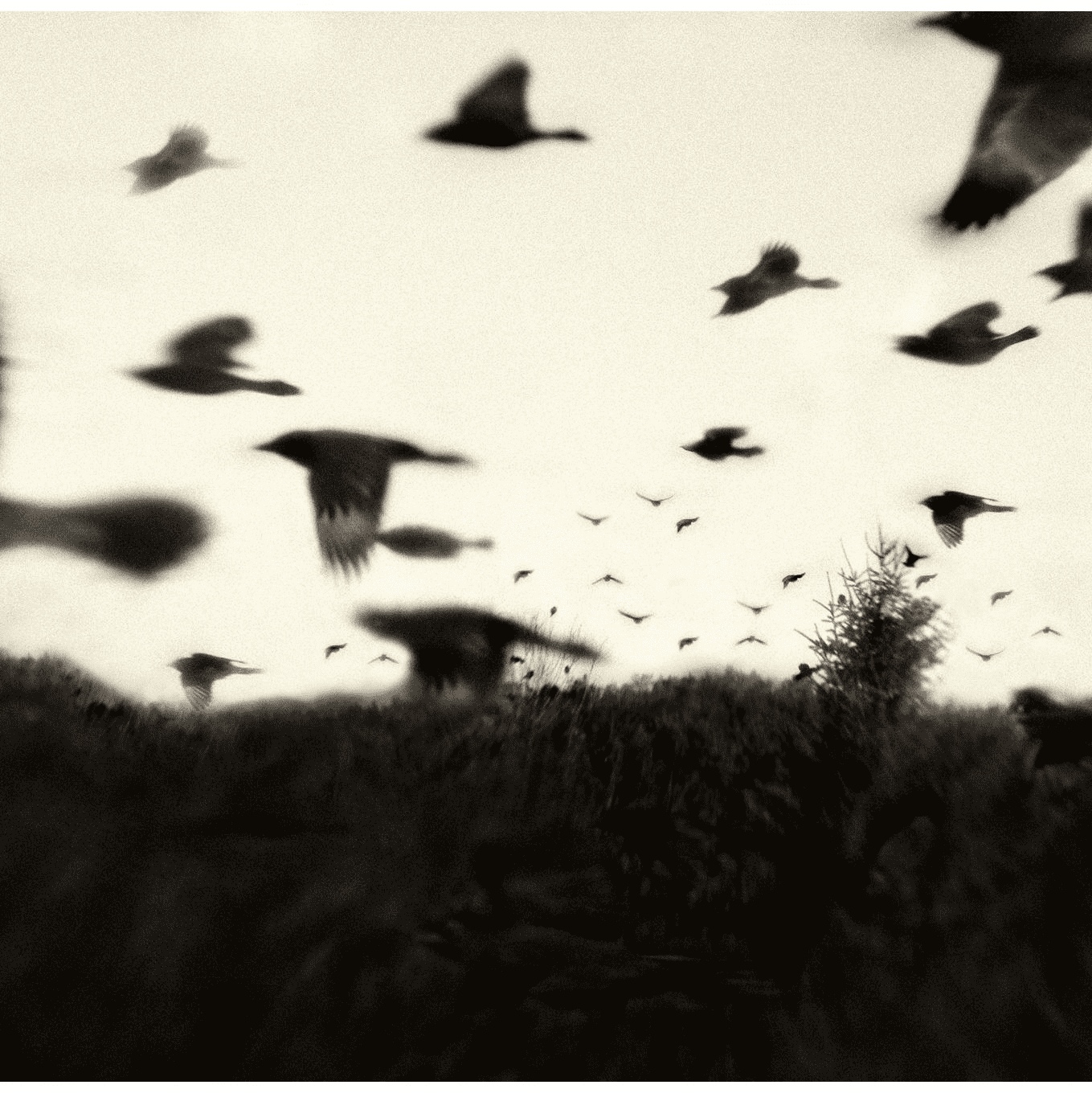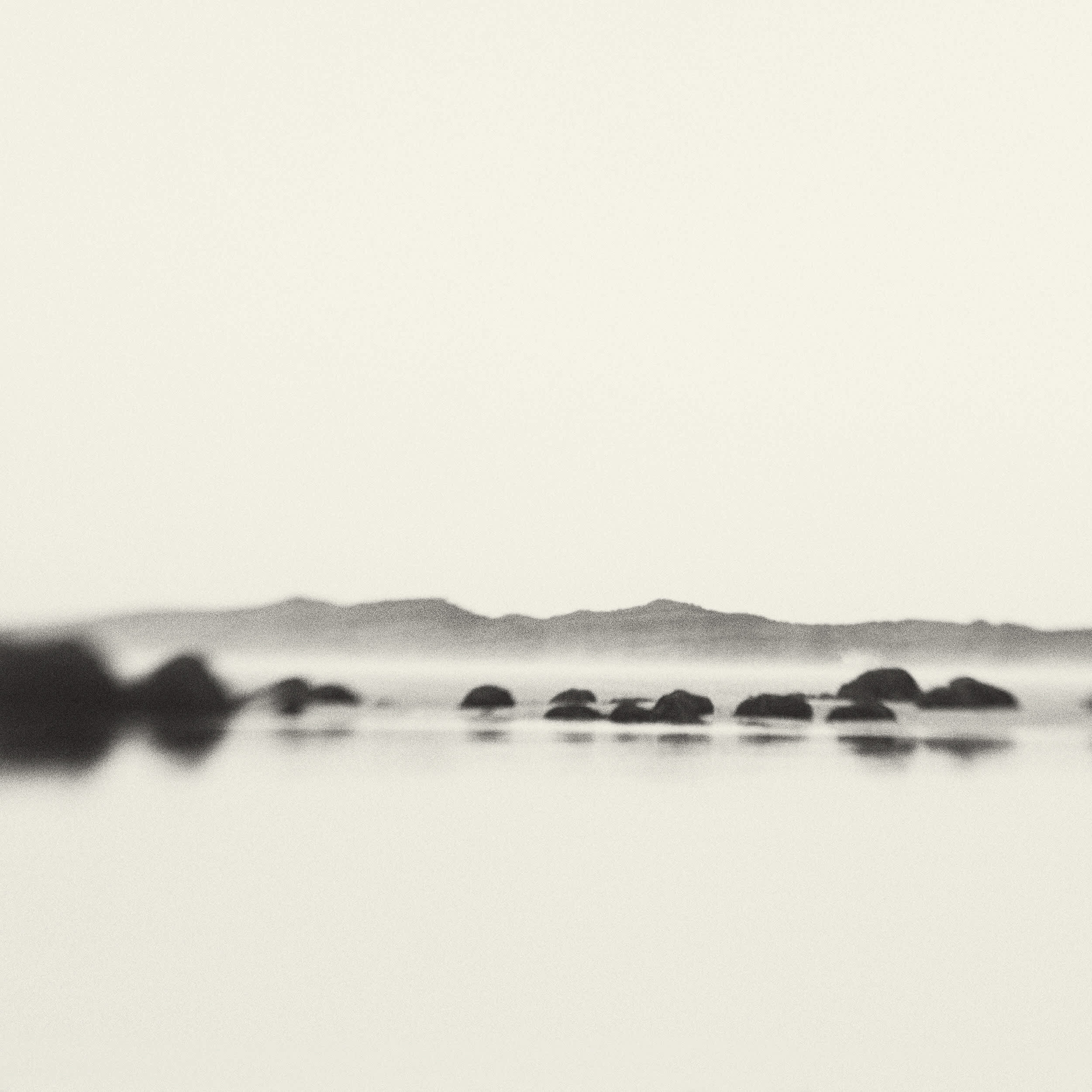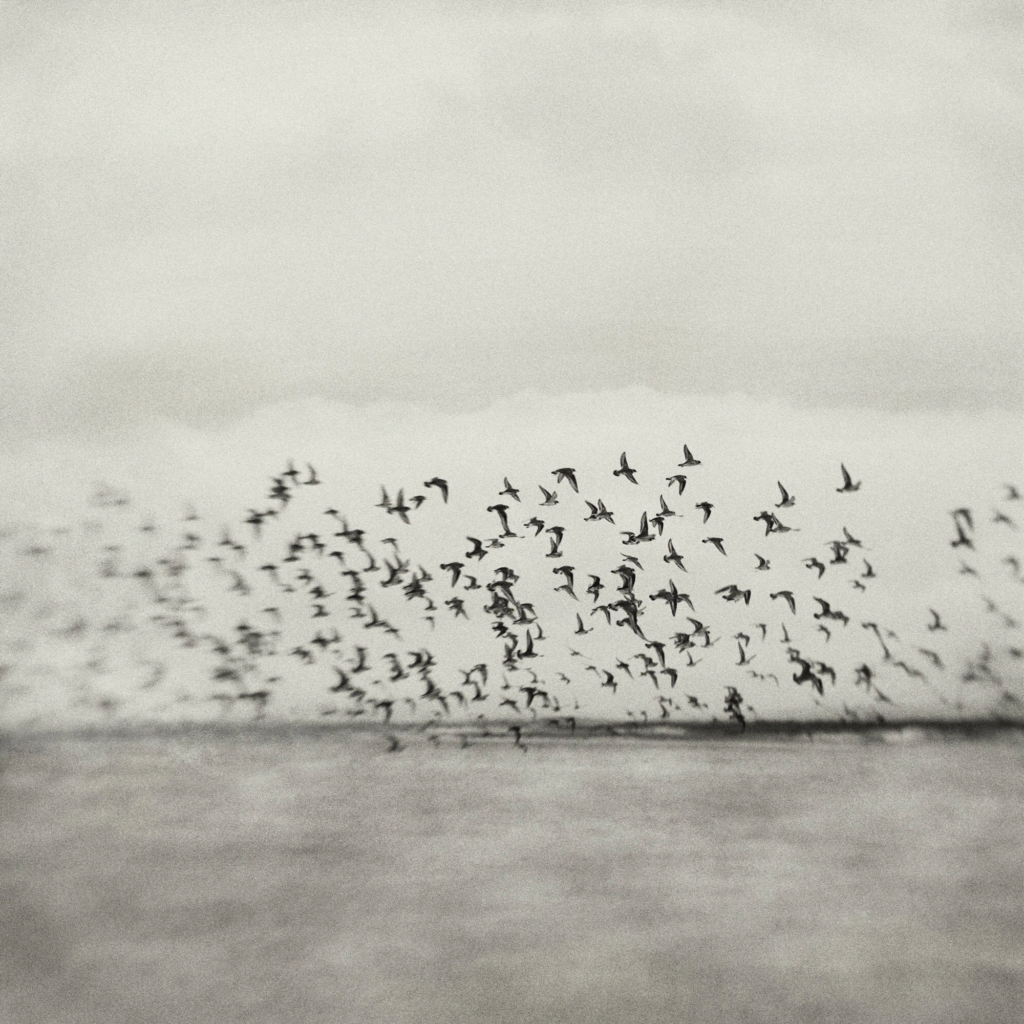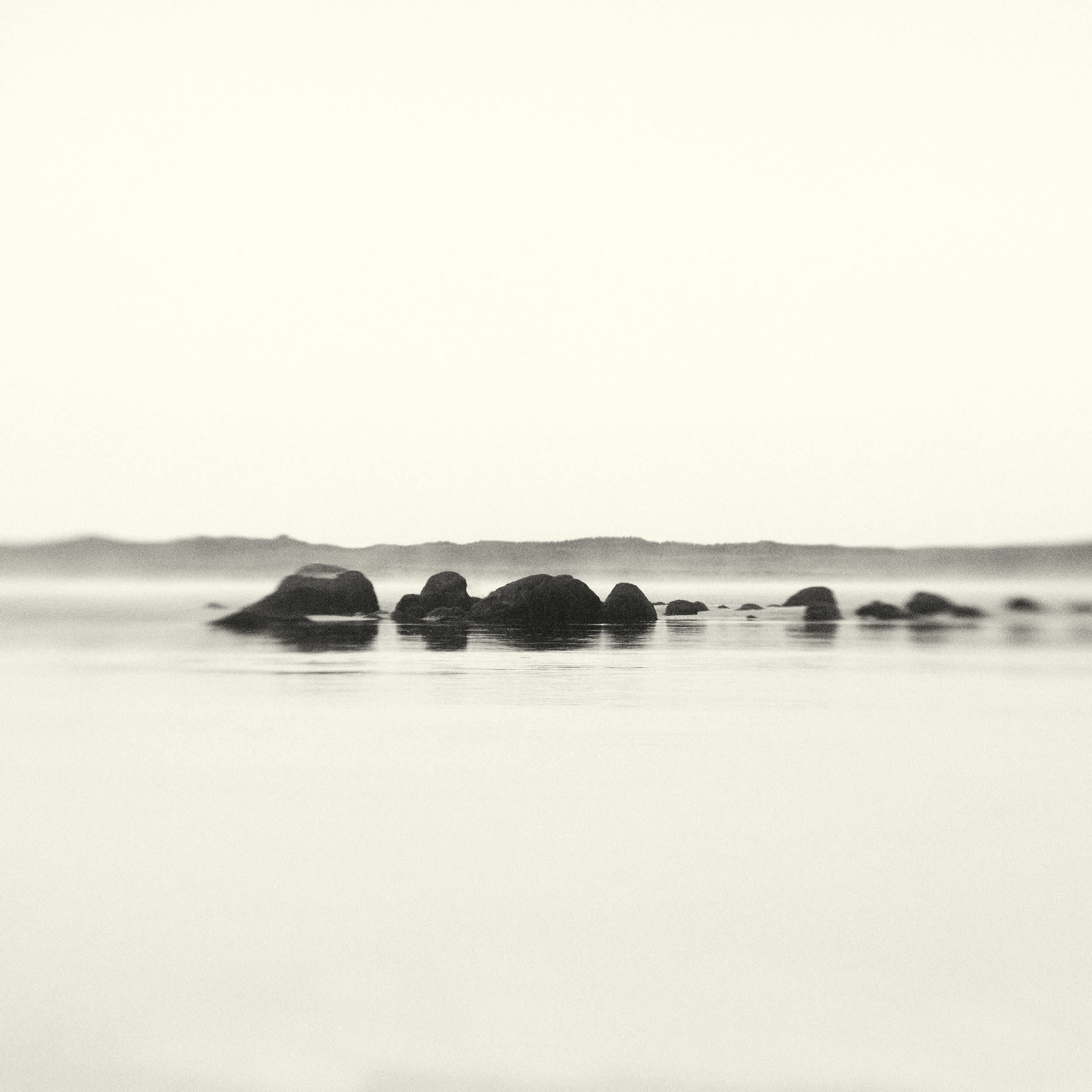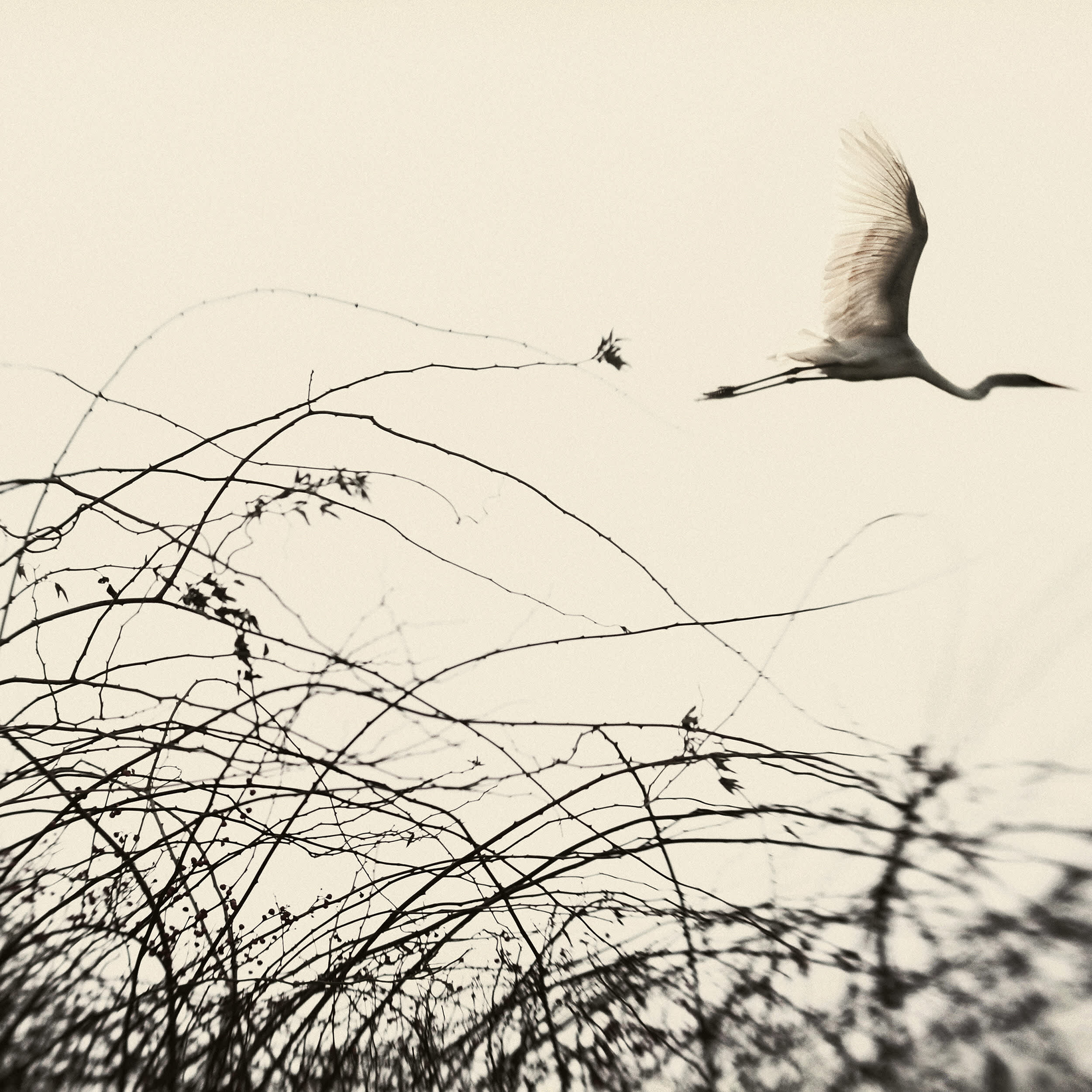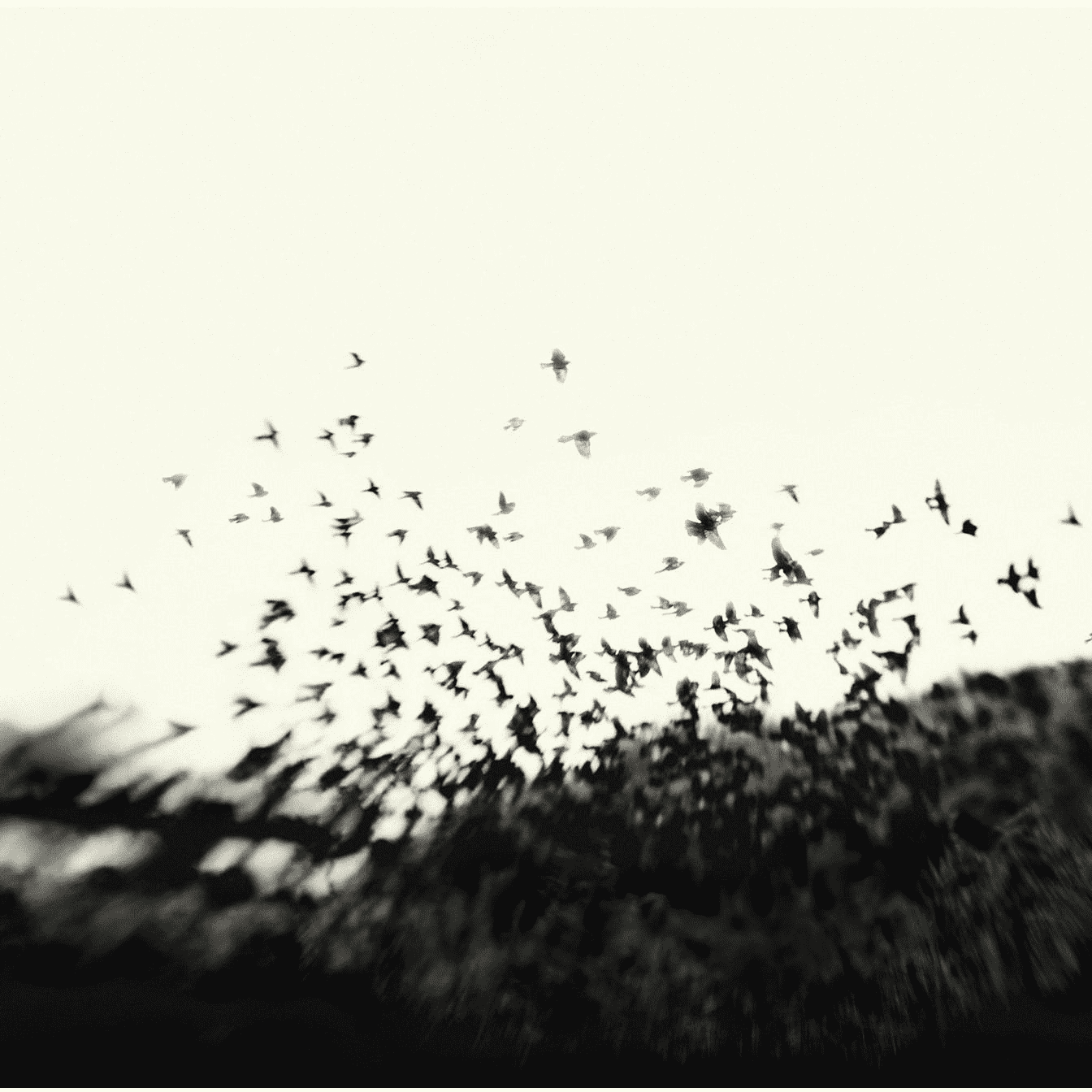In the Studio with Elena Lyakir
November 8th, 2023
Elena Lyakir virtually sat down with us to discuss her new body of photographs, Mysterium Tremendum, featuring the Icelandic landscape. Lyakir’s photography examines how emotions and memories are captured and represented through symbolism. Strongly informed by the emotional ramifications of her own displacement and diaspora, Lyakir describes herself as, “always in flux and on a journey to find a place to call home.” Additionally, she is intensely inspired by nature as a fundamental source of essence and myth and relates these feelings to her own immigration experience. The themes of beauty, nourishment, unpredictability, and fierceness are all prevalent in her work, most notably through her depiction birds as symbols of hope, freedom, and migration.
Interested in the aesthetic relationship between photography and other disciplines, Lyakir takes a whimsical approach to her practice, pushing the limits of photography to suggest painterly abstractions. Lyakir states that, “I enjoy the extemporaneous quality of these processes and view my practice as an extension of seeing and an
exercise of instinct and connectivity.” She employs tilt-shift lenses to allow room for such spontaneity which often helps reveal the unseen. The resulting deviations lead her to new discoveries.
What is your work about?
It’s a challenge for us to see the natural world as an extension of self, rather than being removed from it as the observer, the curator, the possessor, and the beneficiary. I am fascinated by our visceral relationship to nature and how mystical experiences in nature and by nature do not arise merely from their contents but also in accord with the alternate states of consciousness during which they occur. Those of us living in urban environments mostly see nature for its romantic beauty, which has been cultivated to nurture and inspire us. Man has tamed it into parks, gardens, yards, and farms yet nature in its essence is fierce and unpredictable, simultaneously terrifying and awe-inspiring, not unlike a spiritual or religious experience.
When I decided to travel to Iceland, I knew that the landscape was going to be dynamic and evocative yet nothing prepared me for the astonishment I felt while being immersed in it. The title, Mysterium Tremendum, was conceived during my journey through the wild landscapes, hiking through volcanic lava fields, black river valleys, crumbling kaleidoscopic mountains, majestic basalt coastal cliffs hovering over glistening arctic blue of the blustering North Atlantic. Immersed in erratic weather patterns, at times merely uncomfortable, sometimes truly terrifying and some sweeping like a gentle tide pervading the mind with a tranquil mood of deepest worship, a spiritual phenomenon, which seemed to pass over into a lasting attitude of the soul.
The term, Mysterium Tremendum, was coined by Rudolf Otto, one of the most influential thinkers on theology of the twentieth century. He is best known for his analysis of the experience that, in his view, underlies all spirituality. He calls it “numinous,” and it has three components: mysterium tremendum et fascinans. As mysterium, the numinous is “wholly other” – entirely different from anything we experience in ordinary life. It evokes silence and awe. But the numinous is also a mysterium tremendum, which can elicit fright because it presents itself as overwhelming power. Finally, the numinous presents itself as fascinans – alluring, benevolent, and gracious.
The tremendous awe, beauty and mystery contrasted by the feeling of being alarmedly exposed and insignificant against the magnitude of the landscape in Iceland is the Mysterium Tremendum I attempt to convey with these photographs shot with a tilt-shift lens and makeshift analog filters.
How is this work made? What materials did you use and why?
I shoot with an old Fuji camera. I believe that, as an artist, you can use almost any tool to convey your unique language. I use my camera playfully and like to push the photographic art medium to suggest painterly abstractions as I interpret what I see into what I feel and vice versa.
Site-specific work often informs my practice. Each place I photograph offers something special and unique. I often spend time exploring and learning about a place to gain a perspective of its ecological history from which its culture originated.
My works are not simply photographs of a place but the result of multiple processes. I often return to a place over and over to spend time engaged in the landscape, take photographs in different times of the day using special lenses and makeshift filters, in-camera multi-exposure, and sometimes hours of post production in order to weave luminous, immersive montages which attempt to turn the visual experience into an emotional one.
What’s your background? Did you always want to be an artist?
I grew up in communist Ukraine and was very much influenced by the mysticism of my culture’s art, literature and cinema. I was always creating, making objects from things I found in nature, writing, drawing and I loved to perform but being an artist was a very abstract idea given my circumstances and it took me a long time to find my voice.
I immigrated to the US and arrived in NYC at 18, very naive and impressionable but also lost and alone. Naturally I gravitated to artists and was quickly swept up by the vibrant avant garde art scene of the 90s Lower East Side. I started experimenting with pretty much any and every medium but something about holding a camera in my hands made me feel like myself and I was definitely a voyeur. Years passed before I found the language to communicate my search for belonging, which is the inspiration behind my work. I finally found my home in nature.
What kind of creative patterns, routines or rituals do you have? What time of day do you prefer to work?
I start my days very early in the morning. I love to watch the sun rise. It inspires optimism and creative thinking. As a photographer I follow the light. I am stimulated and inspired by other forms of art so I often read or write poetry, meditate and listen to music throughout the day. I don’t push myself to shoot everyday, instead I spend time in nature open to what is. When inspiration strikes I am ready.
What thoughts go through your mind when you create?
When I am shooting it’s completely instinctual and I see it as an exercise in connectivity. I shoot what I feel, not what I see. I am very much in tune with the senses being outside in nature. The sounds of the beating wings of birds, the scents of the forest, the way the ocean air feels on the skin, the heat of the desert sun, and so on.
Why/How have you chosen your medium? Which creative medium would you love to pursue but haven’t yet?
I was always intrigued by a photograph as an object that facilitates memory and sentiment. I felt this way looking at historical family photographs as a child. Also, having a camera was a privilege so it was always something of a mystery that I dreamed of possessing.
I always wanted to be a painter but my sister was an amazing artist and there was only room for one artist in the family. This is why perhaps I make photographs that look and feel like paintings.
What are you trying to communicate with your art?
As an immigrant, I am in perpetual search of a place that feels like home. I use nature as a metaphor for this longing and the inherent complexities of the interior world. In a visceral, poetic way, I attempt to convey nature’s role as a grounding element of belonging and a bridge between, the inner and the outer, between cultures and humanity, where all borders are dissolved and we can find sanctuary in both its awe inspiring beauty and its deep bewildering mystery.

